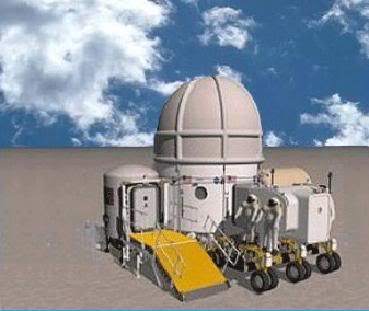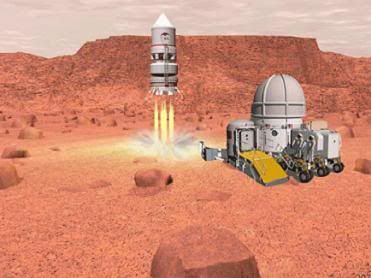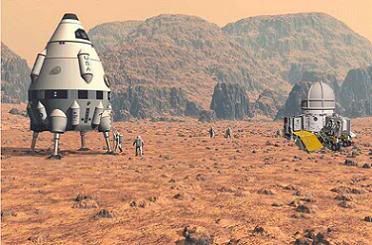Post by glactus on Sept 1, 2011 3:04:17 GMT
A technique used in NASA's capability-driven architecture analysis is analog field testing in the high desert - an environment which simulates conditions that may be encountered on planetary surfaces in space.

The Habitat Demonstration Unit.
Running through potential "day in the life" scenarios at an outpost with prototype equipment allows designers insight into the utilization of the proposed systems so that they can refine architecture and operations concepts.

On Martian soil
The 2010 Desert RATS field test was held in Black Point Lava Flow, Ariz., where two Space Exploration Vehicles operated together and docked with a full scale planetary habitat prototype, the Habitat Demonstration Unit.

The landing site
The 2011 mission campaign of Desert RATS is set to be the most extensive testing to date and involves more systems than in previous years, including more demonstration unit systems. The unit's core module will include improvements to the 2010 configuration including laboratory equipment and work stations.
However, the 2011 version of the HDU will have an additional system that really stands out: an inflatable second story loft known as the X-Hab. Developed by the winning team in the X-Hab Academic Innovation Challenge, this inflatable second story will provide the astronauts with a means of habitation during the mission.

Credits: These are non copywrite images
This is part text only. See full text and all scientists involved at Space daily.com
www.marsdaily.com/reports/HDU_Technologies_Demonstrated_in_2011_Field_Testing_999.html

The Habitat Demonstration Unit.
Running through potential "day in the life" scenarios at an outpost with prototype equipment allows designers insight into the utilization of the proposed systems so that they can refine architecture and operations concepts.

On Martian soil
The 2010 Desert RATS field test was held in Black Point Lava Flow, Ariz., where two Space Exploration Vehicles operated together and docked with a full scale planetary habitat prototype, the Habitat Demonstration Unit.

The landing site
The 2011 mission campaign of Desert RATS is set to be the most extensive testing to date and involves more systems than in previous years, including more demonstration unit systems. The unit's core module will include improvements to the 2010 configuration including laboratory equipment and work stations.
However, the 2011 version of the HDU will have an additional system that really stands out: an inflatable second story loft known as the X-Hab. Developed by the winning team in the X-Hab Academic Innovation Challenge, this inflatable second story will provide the astronauts with a means of habitation during the mission.
Credits: These are non copywrite images
This is part text only. See full text and all scientists involved at Space daily.com
www.marsdaily.com/reports/HDU_Technologies_Demonstrated_in_2011_Field_Testing_999.html


